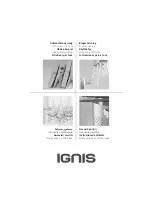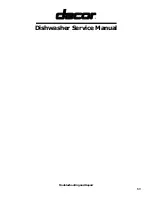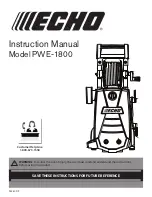
1
Safety instructions
The washing machine is heavy - take care when lifting.
Caution: frozen hoses can crack/burst. Do not install the washing machine outdoors or in
areas exposed to frost.
The washing machine could be damaged. Do not lift the appliance by protruding
components (e.g. the washing machine door).
In addition to the instructions provided in this document, special regulations from the
relevant water and electric utility companies may apply.
If in doubt, have a technician connect the appliance.
Route hoses and cables in such a way that there is no risk of tripping.
Environmentally-friendly disposal
Dispose of packaging in an environmentally friendly manner.
This appliance is labelled in accordance with European Directive 2002/96/EC on
Waste Electrical and Electronic Equipment - WEEE.
The directive provides an EU-wide framework for the return and recycling of used
appliances.
Installation surface
The machine must be stable so that it does not move around.
The surface on which it is installed must be firm and level.
Soft floors/floor coverings are not suitable.
Installation on a pedestal
The feet of the washing machine
must
be secured with holding brackets .
Installation on a wood joist floor
If possible, place the washing machine in a corner.
Screw a water-resistant wooden board (min. 30 mm thick) to the floor.
The feet of the washing machine
must
be secured with holding brackets.
Installing the appliance
Install the appliance before connecting it to the power supply.
Installation in a kitchenette (underneath the worktop or fitted in a cabinet)
Recess width of 60 cm required.
Only install the washing machine underneath a continuous worktop that is securely
connected to adjacent cabinets.
Installation underneath the worktop
Risk of electric shock.
Instead of the appliance covering plate, you
must
have a metal cover fitted by an expert.
Recess width of 60 cm required.
2
Scope of delivery
Also required, depending on the connection:
1 hose clamp Ø 24-40 mm (specialist retailers) to connect to a siphon
a
Page 4
;
water connection
Useful tools
Spirit level for levelling.
Spanner with
WAF13: for loosening the transport safety devices
a
Page 3
and
WAF17: for aligning the appliance feet
a
Page 5
.
Hose and cable lengths
Left-hand connection
or
Right-hand connection
Note: Using hose clips limits the possible hose lengths.
Available from specialist retailers/the after-sales service:
Extension for Aqua
ä
Stop and cold water inlet hose (approx. 2.50 m).
Longer inlet hose (approx. 2.20 m) for standard model.
Spanner
(depending on model)
Mains cable
Water inlet
Water outlet
Elbow
for fixing the drainage
hose in place
Covers
with hose clip
Aqua
ä
Stop
~
140 cm
~
95 cm
~
120 cm
~
130 cm
~
100 cm
~
135 cm
0
-
m
ax
. 1
0
0
c
m
Moisture inside the drum is
due to final testing.
3
Removing the transport safety devices
Before using the appliance for the first time, the 4 transport safety
devices must be completely removed and kept safe.
If you need to transport the appliance at a later date, always refit the
transport safety devices to prevent damage to the machine.
a
Page 6.
Store the screw and sleeve screwed together.
1.
Take the hoses out of the holders and the elbow.
Remove the elbow.
2.
Unscrew and remove the bolts from all 4 transport safety devices.
3.
Take the mains cable out of the holder. Remove the sleeves.
4.
Insert the covers. Secure tightly by pressing on the snap-in hook. Insert the hose clip.
5.
Secure the hoses in the hose clips.
4
Water connection
l
Risk of electric shock.
Do not immerse the Aqua-Stop safety device in water
(contains an electric valve).
To prevent leaks or water damage, observe the instructions in this section.
Caution
: only operate the washing machine using cold drinking water.
Do not connect to the mixer tap of an unpressurised hot-water boiler.
Do not use a used inlet hose. Only use the inlet hose supplied or one which was
purchased from an authorised specialist retailer.
If in doubt, have a technician connect the appliance.
Water inlet
Water inlet hose:
Caution
: do not kink, squash, modify or cut through
(otherwise its strength is no longer guaranteed).
Optimum water pressure in the supply network: 100-1000 kPa (1-10 bar)
When the tap is on, the water flow is at least 8 l/min.
If the water pressure is higher than this, a pressure reducing valve must be installed.
Model: Aqua
ä
Stop
1.
Connect the water inlet hose to the tap.
Caution
: only tighten the screw connections by
hand.
2.
Open the water tap carefully, checking the leak
tightness of the connection points.
Caution
:
the screw connection is under mains
water pressure.
Water outlet
Water outlet hose:
Caution
:
do not kink or pull lengthways.
Height difference between the installation surface and the drain:
0 - max. 100 cm
Outlet into a sink
Caution
: secure the drain hose so that it cannot slip out.
Caution
: the plug must not block drainage from the sink. During pumping,
check whether the water is draining away quickly enough. The end of the
drain hose must not be immersed in the water that is pumped out! This
would result in the risk of water being sucked back into the washing
machine!
Drainage into a siphon:
Caution
: the connection point must be secured with a hose clamp,
Ø 24-40 mm (specialist retailers).
.
Outlet into a plastic pipe with rubber bushing or into a drainage pit:
Caution
:
secure the drain hose so that it cannot slip out.
max.
90°
max.
90°
min.
10 mm
3/4
























